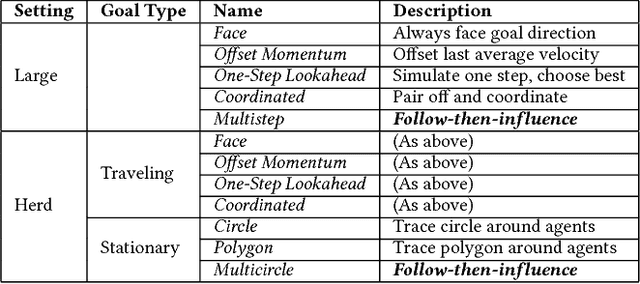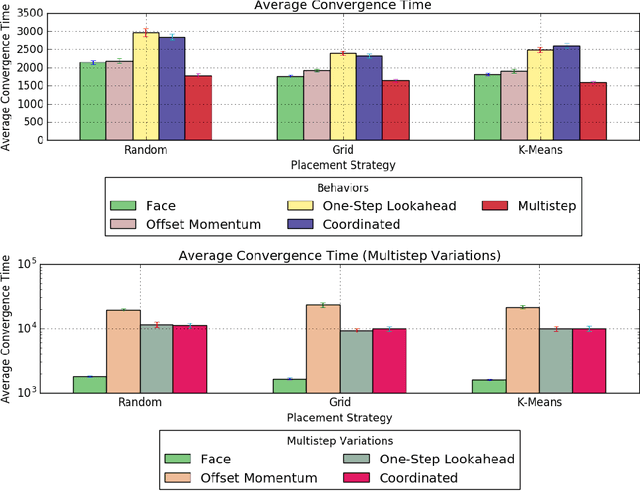Emily S. Wang
Influencing Flock Formation in Low-Density Settings
Apr 23, 2018



Abstract:Flocking is a coordinated collective behavior that results from local sensing between individual agents that have a tendency to orient towards each other. Flocking is common among animal groups and might also be useful in robotic swarms. In the interest of learning how to control flocking behavior, recent work in the multiagent systems literature has explored the use of influencing agents for guiding flocking agents to face a target direction. The existing work in this domain has focused on simulation settings of small areas with toroidal shapes. In such settings, agent density is high, so interactions are common, and flock formation occurs easily. In our work, we study new environments with lower agent density, wherein interactions are more rare. We study the efficacy of placement strategies and influencing agent behaviors drawn from the literature, and find that the behaviors that have been shown to work well in high-density conditions tend to be much less effective in lower density environments. The source of this ineffectiveness is that the influencing agents explored in prior work tended to face directions optimized for maximal influence, but which actually separate the influencing agents from the flock. We find that in low-density conditions maintaining a connection to the flock is more important than rushing to orient towards the desired direction. We use these insights to propose new influencing agent behaviors, which we dub "follow-then-influence"; agents act like normal members of the flock to achieve positions that allow for control and then exert their influence. This strategy overcomes the difficulties posed by low density environments.
 Add to Chrome
Add to Chrome Add to Firefox
Add to Firefox Add to Edge
Add to Edge